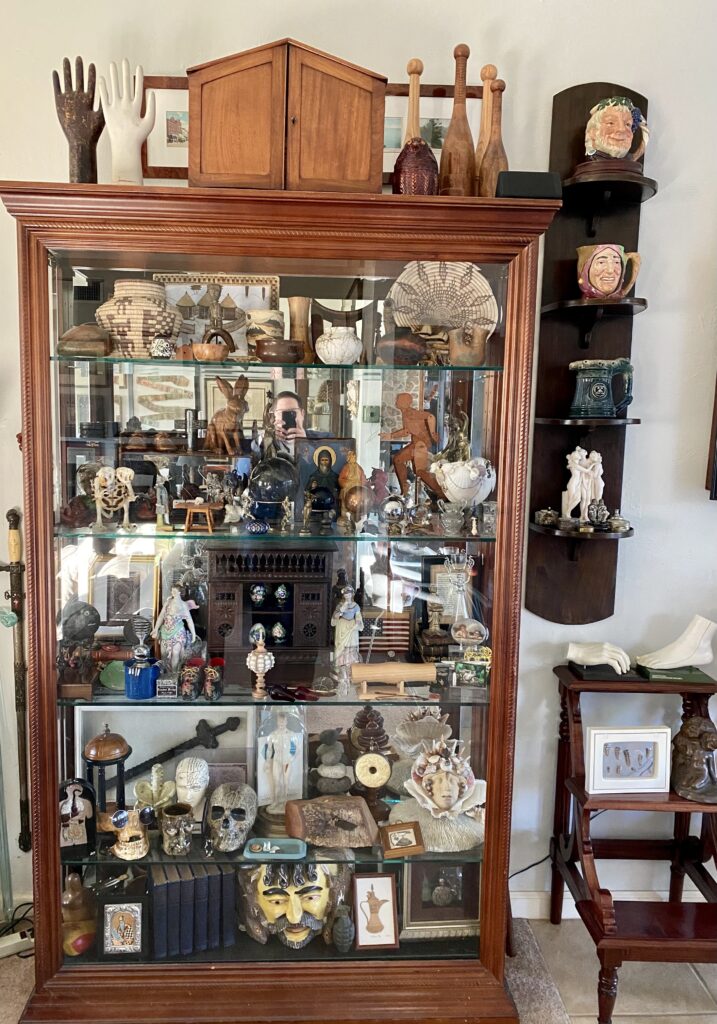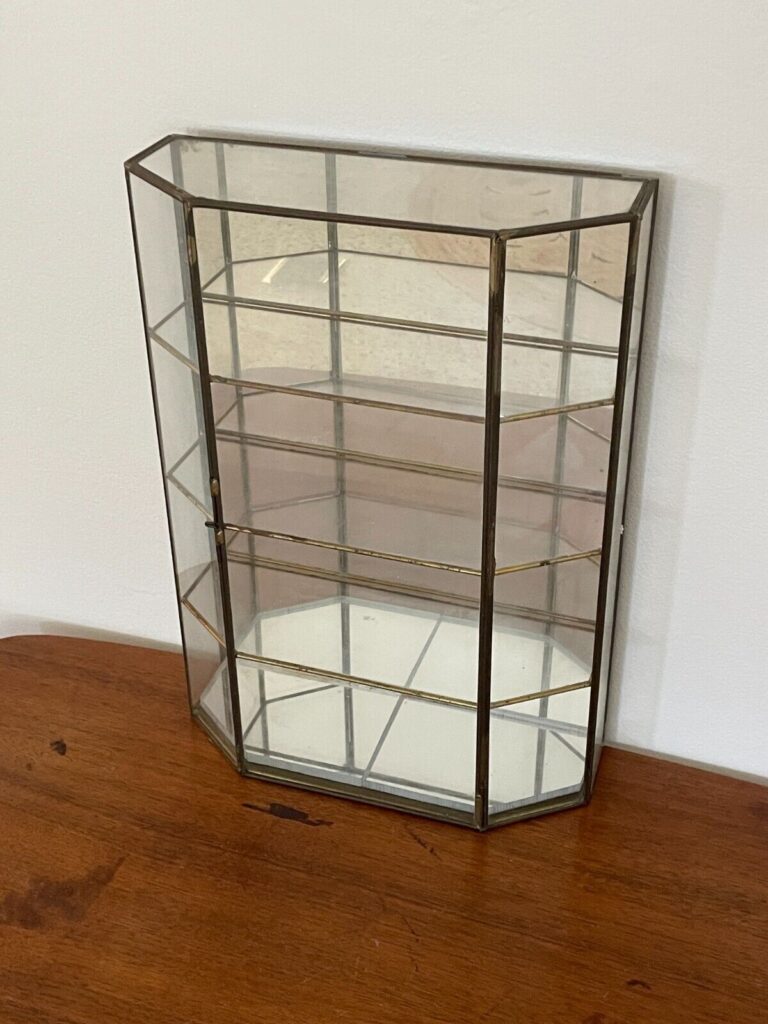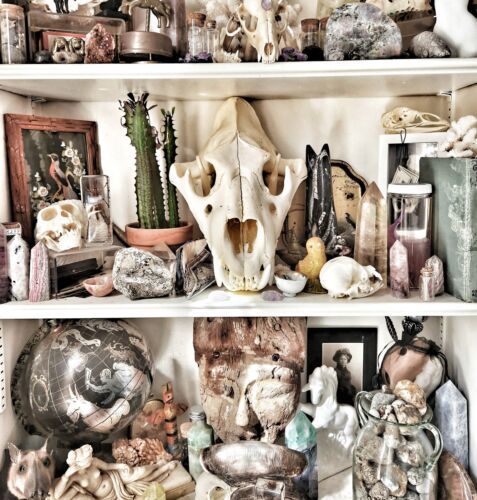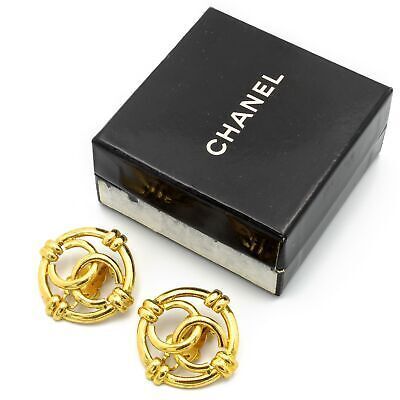#Curiosity #Cabinets #Grandmas #Curio #Cupboards #WorthPoint

Photo: Flickr
Google the phrase “cabinets of curiosity,” and you’ll find dozens of links to the 2022 Netflix horror anthology Guillermo del Toro’s Cabinet of Curiosities or Cirque du Soleil’s 2020-premiering show Kurios – Cabinet of Curiosities. Auction houses have created entire departments to sell this collecting niche or to tempt new collectors. If you dare, try the search on social media and be transported down a rabbit hole into a wonderland of the strange, the beautiful, or the macabre. So popular is the term that TikTok reports 4.1 billion videos connected with the term, including tours of personal curiosity cabinets and DIY videos on how to repurpose that curio your grandmother left you. Even hashtags (#curiositycabinets or #curiocabinet) on Instagram are racking up posts, with almost 125,000 alone. The streaming trend piqued our own, well, curiosity, so we dug into the “whats, whens, and whys” behind the vogue.
IN THE BEGINNING
Essentially, curiosity cabinets hold things people find unique and rare. Originating in Europe in the sixteenth and seventeenth centuries—from the German Kunstkabinett or Wunderkammer (which translate, respectively, to “art cabinet” or “chamber of curiosities”)—they began as entire rooms full of strange and wonderful things; in short, early museums. Objects housed within were often those collected by the literati, privileged explorers, or the wealthy elite and aristocracy as they traveled the world, hunting and gathering things they found interesting and novel.
Of course, once travelers got home, they had to find a suitable way to show their finds off to friends and family, so a new furniture form was launched. Those who could not devote an entire room of their house to their discoveries had pieces of furniture fashioned that suited the purpose. Originally ornate examples, to have one in your house was a status symbol. It identified the owner as someone who was intellectually curious about the greater world, a desirable quality, particularly during the Age of Enlightenment. The process of organizing the contents led to a greater understanding of the objects themselves.

Photo: Eric Bradley
Many early curiosity cabinets contained scientific marvels, natural history relics—minerals, animal skeletons, and the like—or things simply so precious or fragile they warranted a little added protection. They assumed the status of treasures obtained in foreign lands and brought with them the promise of captivating stories of how and when they were acquired.
Over time, curiosity cabinets have evolved, sometimes narrowing in focus or shrinking in size. By the twentieth century, cabinets of curiosity had become more common, even utilitarian, and adopted the name “curio.” Even if a house was not the home of an intellectual, families still wanted a secure place to display things like precious wedding china, breakable collectibles, or valuable heirlooms. As the century progressed and families adopted increasingly less formal lifestyles, even curio cabinets came to be seen as outdated.

DIY-ING FOR YOUR OWN CURIOSITY CABINET?
The desire to show off one’s prized possessions has never faded, but one no longer needs to be an aristocrat to have their own curiosity cabinet. In the same way a person’s sense of style signals personal things about the wearer, a curiosity cabinet often reveals the depths of a person’s intellect or passions. A beauty and benefit of curiosity cabinets is they can hold whatever the owner wants, from a collection of seashells acquired from a lifetime of beach vacations to a seemingly random assortment of small things one finds pretty or interesting. And yet, most that are presented on social media have an element of the macabre. Taxidermy specimens of small animals, insects, and bugs are favored highlights of modern curiosity cabinets, paralleling our fascination not only with nature but with death.
To perfectly illustrate this point, one need look no further than the #CreepiestObject Twitter challenge that surfaced in the early days of the pandemic. In a viral response that even got the attention of The Washington Post, locked-down curators worldwide presented the ugliest, creepiest, and most spine-tingling things in their collections.
The anonymity of social media makes it an ideal space to flaunt one’s quirks or fly your freak flag high. Combine that with millennial collectors who embrace the mantra of repurposing and reusing antique and vintage furniture, and it’s no wonder the trend of owning and making curiosity cabinets, particularly small ones, has become mainstream.
RULES OF ENGAGEMENT
In a world where pretty much anything goes, the only apparent rules are that objects should be thought-provoking and assembled in some way they can be seen, even if temporarily. Beauty is in the eye of the beholder, so don’t be afraid to feature things YOU find interesting.
Many online DIY videos start with small empty cabinets, usually with a glass-lined front and sides for visibility. Objects are then carefully placed inside, often in relationships to each other that stimulate conversation or thought. Don’t be afraid to make your own cabinet of curiosity personal. An advantage of making small ones is having different themes for each one to match the mood of a room or other space.

For crafters who need a little help getting going, entire collections are often sold in auctions or other venues where they can be acquired in one fell swoop. You can cherry-pick from the assortment if things within don’t match your mood. A seasonal curiosity cabinet can also be a good way to start—on a small thematic scale—with a display that can be put away during parts of the year. It doesn’t have to be one you want to look at year-round.
You may find—in the course of making your own curiosity cabinet—that you learn something, not only about your favorite things but also about yourself.
Madelia Hickman Ring has worked in the arts and antiques world for nearly 30 years. She has a particular passion for following art market trends, but when she’s off duty, she enjoys paddleboarding, cooking, and binge-watching Netflix.
WorthPoint—Discover. Value. Preserve.




